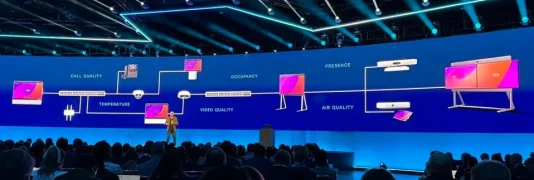So why aren’t non-iPad tablets selling as well as the iPad? I read a very interesting article Wednesday from James Kendrick at ZD Net. His contention is that one of the biggest issues is competing with Apple’s “consistent marketing experience”. I agree that’s a big issue, but I think there’s an even more basic core issue here and it starts with risk, considered purchase process, influencers and the product experience.
Tablets are a Risky and “Considered” Consumer Purchase
Consumers, regardless of demographics and psychographics, share some common behaviors. When they are posed with a risky, considered purchase, they are looking for reasons to reject products and not look past their warts. And tablets are a risky, considered purchase. For a time, tablets started at $499, well above the starting prices of a notebook, desktop, or smartphone. Tablets don’t run programs or content like the PC that consumers are familiar with. And they are very fragile when compared to other devices.
Consumers Research to Mitigate Risk
As I said above, when posed with an expensive, risky purchase, it is “considered”, meaning they will research it or find a brand which “buffers” the risk. By researching it, I don’t mean doing a master’s thesis. I mean doing a few web searches, going to a recommended tech site, asking a few “geek” friends and tossing a few questions out on Twitter or Facebook. What consumers heard back were some positive and some negative things about non-iPads. Even more importantly though, is that very few if any negatives ever came back from their iPad research. Worst thing you might hear back about the iPad is that it doesn’t run Flash, it doesn’t have SD memory upgrade, and it’s expensive.
So was it some conspiracy that the negative things were being said or were they just the facts of what actually shipped at launch? The fact is, the clear majority of non-iPad tablets at their launch suffered from many issues as it related to the iPad, which established the bar of a successful tablet.
Tablets Lacked Convenient, Paid Content at Launch
Many media tablets launched without a whole lot of media:
- Lack of video services like Netflix, Hulu, movie rental, or movie purchase capabilities
- Lack of music services like Pandora, Spotify, or music purchase capabilities
- Lack of book services like Kindle or BN Reader
This issue is being slowly solved, but the damage had been done at launch.
Tablets Lacked Stability and Responsiveness at Launch
Many tablets launched with multiple application crashes, hangs and were intermittently unresponsive. When apps would become unresponsive, the users would get a message asking them what they want to do, similar to the way Windows alerts the user. The iPad 2 launch experience was responsive and stable. Yes, the iPad 2 does still experience some app crashes, but it’s less frequent and when it does, it just closes the app.
This issue has been solved for all non-iPad tablets with OS updates, but again, the damage was done at launch.
Tablets Lacked Premier Applications at Launch
I don’t believe consumers are fanatical about the 100’s of thousands of apps that should be on a tablet. I do believe that they want to have the most popular applications that they care about, though. Most non-iPad tablets launched without premier apps, like premier news, sports, and social media apps. One tablet even shipped without a built-in email and calendar client and research shows that email is the #1 tablet application. Android tablets shipped at launch without a Twitter app.
Only Android 3.2 tablets have addressed this issue so far, but again, the perceptual damage was done.
Tablets Shipped at Launch with Hardware Challenges
Not only were there software issues at launch, but hardware as well. Tablets shipped with inoperable SD card slots and USB ports that didn’t work properly. Even competing with the physical iPad 2 design was a challenge. Some tablets were nearly twice as thick as the iPad, used plastic design versus aluminum, and one tablet even shipped with a case that blocked major ports like power, USB and HDMI.
Some of these issues have been addressed, but the damage was done.
Should Everyone Else Just Quit?
With all of these issues at launch and challenging sales so far, should everyone except Apple just quit and concede to Apple? Absolutely not! This is the first inning in a nine inning game, and the game hasn’t been lost. In short order, every tablet will be thin and light enough and power efficient enough until it’s inconsequential. Most apps will move to web apps virtually eliminating the app barrier, and everyone will have the right paid content. Apple obviously won’t stand still and I agree with Ben Bajarin when he says, “success will only come to those who want to compete with the iPad by thinking fresh and taking bold and innovative risks.” I have had the honor to work for companies who slayed goliath and I have been slayed myself, so I have seen both sides. It takes courage and conviction and I believe the tech industry can and will do that.
Patrick founded the firm based on his real-world world technology experiences with the understanding of what he wasn’t getting from analysts and consultants. Ten years later, Patrick is ranked #1 among technology industry analysts in terms of “power” (ARInsights) in “press citations” (Apollo Research). Moorhead is a contributor at Forbes and frequently appears on CNBC. He is a broad-based analyst covering a wide variety of topics including the cloud, enterprise SaaS, collaboration, client computing, and semiconductors. He has 30 years of experience including 15 years of executive experience at high tech companies (NCR, AT&T, Compaq, now HP, and AMD) leading strategy, product management, product marketing, and corporate marketing, including three industry board appointments.
- Patrick Moorheadhttps://moorinsightsstrategy.com/author/phfmphfmgmail-com/
- Patrick Moorheadhttps://moorinsightsstrategy.com/author/phfmphfmgmail-com/
- Patrick Moorheadhttps://moorinsightsstrategy.com/author/phfmphfmgmail-com/
- Patrick Moorheadhttps://moorinsightsstrategy.com/author/phfmphfmgmail-com/






















































































